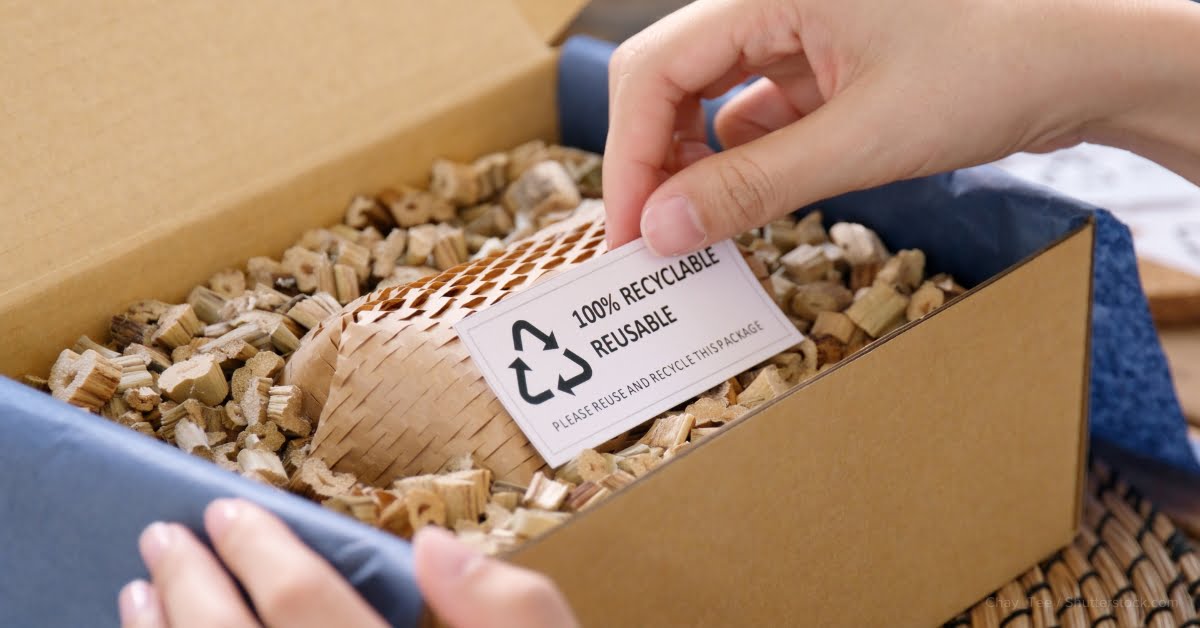
Published
September 28, 2023
Tags:
Let us convince you that the economics of eco-friendly packaging isn’t just for rich companies and they’re for everyone.
Businesses, big and small, are increasingly interested in using eco-friendly packaging. Companies are making the switch from commercial food joints like McDonald’s to luxury brands like Calvin Klein, but many smaller-scale enterprises worry about the upfront costs. Switching to more sustainable packaging isn’t just for big companies–in this week’s blog, discover more about the economics of eco-friendly packaging and its viability!
Budget-friendly? Here are 3 reasons for economics of eco-friendly packaging
In this article, we’ll show you that sustainability is affordable and makes financial sense.
1. More consumers are for sustainability

Sustainability initiatives are not just an ethical choice but a smart business move. Entrepreneurs and business owners should note that their customers are increasingly seeking eco-friendly options. Take a look at these numbers:
- According to a recent consumer study, 73% of consumers are willing to alter their purchasing habits to reduce their environmental impact.
- Among them, 41% are willing to pay more for products aligned with their eco-values.
- About 67% of buyers value recyclable packaging.
- Younger consumers aged 44 and under are leading the charge, with 54% prioritizing sustainable packaging.
- An impressive 83% express a willingness to pay more for products packaged sustainably.
This willingness to invest in eco-friendly products extends to repeat business. Customers who value sustainability are likelier to become loyal patrons of your brand, leading to higher customer retention rates.
2. There is a growing market for eco-friendly packaging

Beyond consumer sentiment, there’s a compelling business case for embracing eco-friendly packaging. The sustainable packaging market is on an upward trend, projected to reach $737.6 billion by 2030.
This growth isn’t just driven by goodwill; it’s a response to market expectations. Sustainable businesses in the Philippines and overseas, including those in the food and beverage sector, are fast-tracking their transition after learning about the economics of eco-friendly packaging materials.
Adopting eco-friendly packaging sets you apart from competitors in a market where sustainability is increasingly important to consumers. It’s a unique selling point that draws in consumers and gives you a competitive edge.
3. Sustainable packaging offers practical financial advantages

Did you know that 99% of plastic products rely on fossil fuels for production? By choosing sustainable packaging materials, businesses can lower their carbon footprint and contribute to environmental conservation while potentially cutting energy costs.
The economics of eco-friendly packaging can also significantly reduce solid waste. In 2018, packaging accounted for a whopping 28.1% of total municipal solid waste generation in the United States. By opting for recyclable and reusable materials, businesses can cut waste management costs and contribute to waste reduction efforts.
The benefits of eco-friendly packaging continue beyond there. Sustainable packaging aligns with regulatory trends, reducing the risk of non-compliance fines and legal issues.
3 Sustainable Packaging Strategies for Businesses
Here are practical strategies for businesses looking to embrace eco-friendly packaging and reap its benefits:
1. Lightweight packaging for cost-efficiency

Lightweight packaging not only reduces shipping costs but also enhances the customer experience. The lighter the packaging, the less it costs to ship your products, and it generates less waste at the receiving end.
Materials like molded pulp, jute, cassava, or corn starch bags have become industry favorites due to their cost-effectiveness and environmental appeal. Customers appreciate environmentally conscious businesses, and a commitment to sustainability can boost customer loyalty.
2. Durable, eco-friendly packaging design

While eco-friendly packaging is essential, durability is equally crucial. Packaging materials must be strong enough to protect products during transit, preventing costly returns and customer dissatisfaction. Prioritize sustainable and robust materials to ensure that long-term expenses are balanced with the gains from alternative packaging to plastics.
3. Streamlined returns process

E-commerce businesses, in particular, face higher return rates compared to brick-and-mortar stores. To address this, consider a streamlined returns process that minimizes extraneous packaging. Using biodegradable packaging for business can significantly reduce waste and logistical headaches.
Preaching the economics of eco-friendly packaging with Oikos

Sustainable packaging isn’t just a choice for eco-friendly businesses. It is also a financially savvy move for all enterprises. By embracing sustainability, businesses can trim costs, protect products, and meet changing consumer expectations.
As the first and only brand in the country to receive an Environmental Technology Verification from the Department of Science and Technology, Oikos Sustainable Solutions proudly stands at the forefront of sustainable packaging innovation. Our packaging, made of corn starch and cassava starch, is plastic-free, biodegradable, and compostable—a holistic and accessible solution to plastic pollution.
Join us in our journey toward reducing plastic waste, protecting the environment, and shaping a greener, more sustainable future for businesses and consumers. Browse our products today and make an eco-friendly choice with Oikos.
Facebook
Linkedin
Twitter
Pinterest
